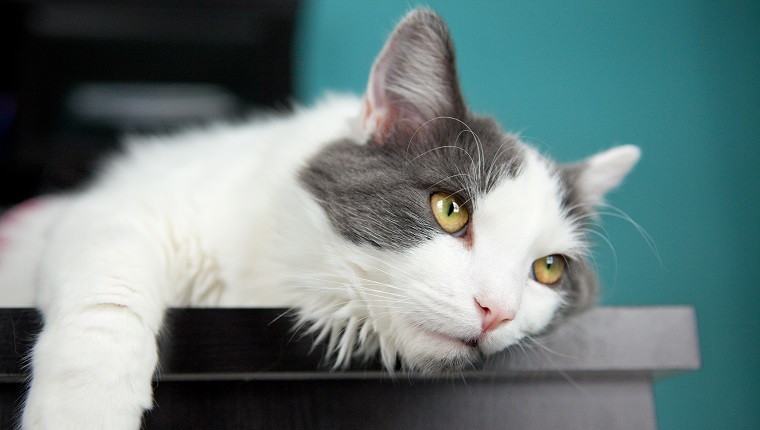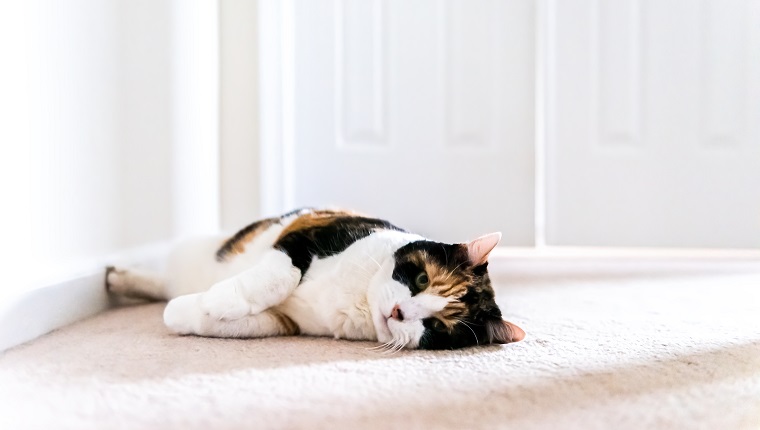Tracheal collapse in cats is a medical condition where a cat’s trachea, also known as the windpipe, becomes narrower and makes breathing harder.
This is a rare but very serious condition. It doesn’t seem to affect one breed of cat more than another, but it does seem more likely to develop in cats who are over the age of six years old. The condition is also often inherited.
If you see signs that your cat is suffering from concerning symptoms, then you must consult your veterinarian for a proper diagnosis and advice. Here’s what you should know about the symptoms, causes, and treatments of tracheal collapse in cats.
Symptoms Of Tracheal Collapse In Cats
Tracheal collapse in cats can produce a range of symptoms, and many of them can come about due to conditions including heat exposure, exercise, and feline obesity.
Some of the most common symptoms include:
- Dry cough
- Breathing issues (including breathing too quickly)
- Membranes turning blue in color
- Wheezing
- Losing consciousness
Causes Of Tracheal Collapse In Cats

Tracheal collapse in cats is often an inherited condition. Some of the other causes include:
- Diseases affecting the airways
- Feline obesity
- Nutritional issues
- Infections of the respiratory system
Veterinary Treatments
If you suspect that your kitty is suffering from tracheal collapse, your veterinarian will want to ask about your cat’s medical history and carry out a full physical examination.
A comprehensive series of blood tests can help to confirm a diagnosis, especially if a cat’s white blood cell count is higher than usual.
Vets can also use X-rays and imaging techniques to diagnose a case, including a fluoroscopy and possibly a bronchoscopy, which involves using a small internal camera to examine the trachea.
When it comes to treatment, the course of action will depend on the severity of the condition. In extreme cases, a cat will need hospitalization and oxygen therapy to help them breathe.
Certain medications can help, including drugs to address any coughing and inflammation. As ever, if your vet prescribes your cat medication, it’s vital that you stick to the exact dosage and frequency instructions and complete the full course of medicine.
While your cat recovers at home, it is important to let them relax in a calm and quiet environment. If your cat is overweight, your vet can also help you to make necessary dietary changes that will aid the recovery process.
Has your cat suffered from tracheal collapse? How are you treating the issue and keeping your cat comfortable? Tell us all about it in the comments below.









